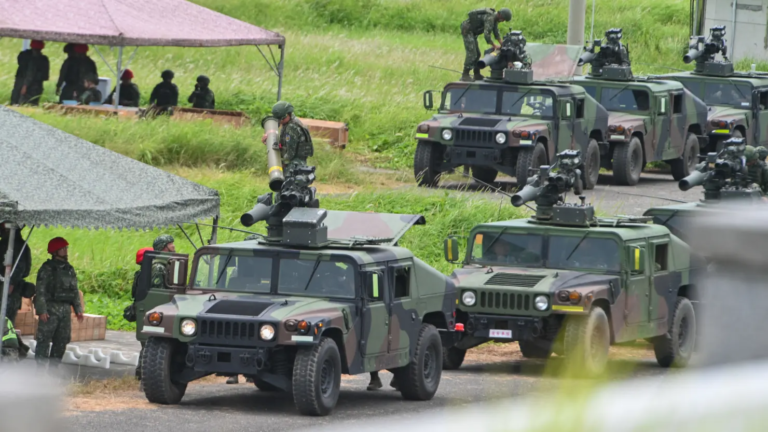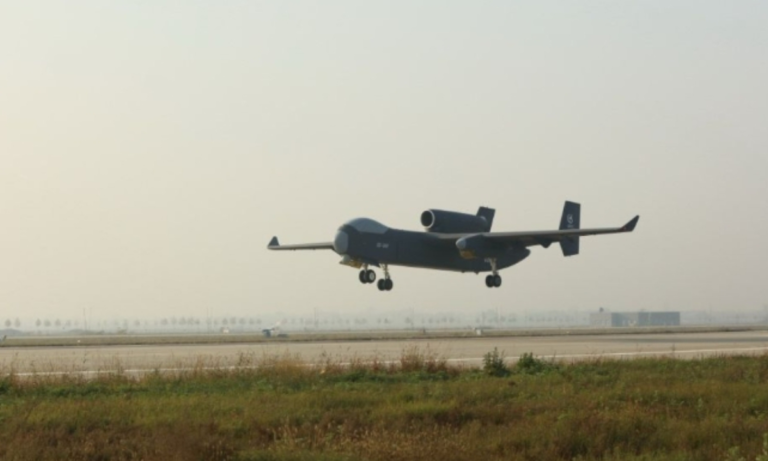
The proposed acquisition of F-16 fighters would bolster Manila’s ability to defend its own assets in disputed parts of the South China Sea.
The United States has approved the possible $5.58 billion sale of F-16 fighter jets to the Philippines, in a bid to bolster its military capacity in the face of increasing Chinese belligerence in disputed waters.
In a statement late Tuesday, the Defense Security Cooperation Agency (DSCA) said that the State Department had green-lighted a sale that includes 20 F-16 jets and the related equipment to its long-standing security ally.
The sale will “improve the security of a strategic partner that continues to be an important force for political stability, peace, and economic progress in Southeast Asia,” the DSCA said. It would also boost “the Philippine Air Force’s ability to conduct maritime domain awareness” and “enhance its suppression of enemy air defences.” The acquisition would also “expand interoperability with the U.S. forces,” the DSCA added.
The announcement came shortly after Defense Secretary Pete Hegseth paid a high-profile visit to the Philippines for talks with senior officials, including President Ferdinand Marcos Jr., during which he vowed to “reestablish deterrence in the Indo-Pacific region.”
“Deterrence is necessary around the world, but specifically in this region, in your country, considering the threats from the communist Chinese,” Hegseth reportedly told Marcos.
The deal comes after several years of growing tensions in the South China Sea, where the China Coast Guard (CCG) has increased both the frequency and intensity of its incursions into waters claimed by the Philippines.
This has resulted in a series of dangerous confrontations in which CCG vessels have rammed Philippine ships or doused them with high-pressure water cannons. In June of last year, Philippine and Chinese personnel came to direct blows close to Second Thomas Shoal in the Spratly Islands, resulting in a serious injury to one Filipino marine.
As a result, Marcos has taken several major steps to increase security cooperation with the U.S., its long-standing security ally. His administration has opened up additional Philippine bases to a rotational U.S. presence under a 2014 defense pact, and initiated more joint patrols and expanded military exercises. In July 2024, under Trump’s predecessor Joe Biden, the U.S. announced $500 million in new military funding to the Philippines, a “once-in-a-generation investment” that would help modernize the Armed Forces of the Philippines.
If it goes through, the proposed jet fighter acquisition, which includes 16 F-16C Block 70/72 multirole fighters and four F-16B Block 70/72 twin-seat variants, would represent “a generational leap in the Philippine Air Force’s tactical airpower,” Defense Security Asia reported.
The Trump White House’s actions so far, including exempting the Philippines from its sweeping foreign aid cuts, suggest that the U.S.-Philippine relationship will survive the administration’s turbulent early months. The approval of the F-16 deal, which was likely initiated under Biden, offers a further sign that the Philippines remains a priority partner in the western Pacific.
It is important to note that the deal has not yet been finalized. DSCA has formally submitted the notification to Congress, and the deal will now be subject to a 30-day period in which legislators can raise objections to the sale. (In practice, objections are rare.) The final configuration, delivery timeline, and price of the deal will then be determined during further bilateral negotiations between the U.S. and the Philippines.
Predictably, China responded to the news of the possible deal by warning the Philippines against threatening “regional peace.”
“Whatever defense or security cooperation between the Philippines and other countries should not target any third party or harm their interest, still less threaten regional peace and security or escalate tensions in the region,” Foreign Ministry Spokesman Guo Jiakun said in a briefing in Beijing yesterday. “Who exactly is fueling the flames? Who exactly is instigating military confrontation? Who exactly is turning Asia into a ‘powder keg?’ Regional countries are not blind.”
The U.S. State Department has approved a potential $5 billion sale of F-16 fighter jets and related equipment to the Philippines, as part of deepening defense ties amid rising tensions in the South China Sea.
Key Details of the Deal:
- Aircraft Included: The proposed sale includes up to 12 F-16C/D Block 70/72 jets, among the most advanced variants.
- Additional Equipment: The package may also include missiles (such as AIM-9X Sidewinders and AIM-120 AMRAAMs), radar systems, and training support.
- Strategic Significance: The sale aims to modernize the Philippine Air Force (PAF), which currently relies on aging U.S. and South Korean jets.
Why It Matters:
- Countering China: The Philippines has been strengthening defense ties with the U.S. amid repeated confrontations with China in disputed waters.
- EDCA Expansion: The U.S. has gained access to more Philippine military bases under the Enhanced Defense Cooperation Agreement (EDCA), making the F-16s a key asset for regional security.
- Approval Process: While the State Department has cleared the sale, Congress must still review it, though significant opposition is unlikely.
Philippine Defense Modernization:
The PAF has long sought advanced fighters, having previously considered Swedish Gripen jets. The F-16 deal aligns with Manila’s shift toward closer U.S. alignment under President Ferdinand Marcos Jr.
This sale follows recent U.S. arms deals with allies like Taiwan and Japan, reinforcing Washington’s strategy to counter Beijing’s military expansion in the Indo-Pacific.





